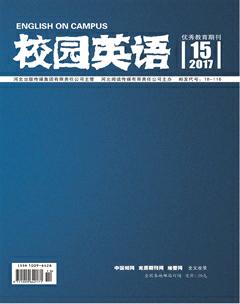The Influence of Regional Dialects on Putonghua Speaking
夏秋怡
【Abstract】There are seven main regional dialects in China: Mandarin(官話), Wu dialect, Gan dialect, Min dialect, Xiang dialect, Hakka and Cantonese. The Chinese dialects are not mutually intelligible but are termed dialects from sociological and political point of view. However, the variety of Mandarin based on the speech in the capital Beijing is the official national language of mainland China and is termed Putonghua. During the communication between people from different regions, we can clearly find some unique characteristics of their regional dialects on their Putonghua speaking. By studying the dialect speaking and Putonghua speaking situation of people from different areas, we aim to get some findings on this kinds of influence and implications of how to improve our language policies accordingly in future development.
【Key words】Putonghua; dialects; influence
【Body】
For the study we adopt a combination of both quantitative analysis and qualitative analysis. We use Sojump to design a questionnaire and spread it through Internet. Then we select participants from different areas to read a certain paragraph and make a recording for us.
The results indicate the current situation of dialect speaking and Putonghua speaking and peoples attitude. Maybe because of the young age of our participants, they are fluent speakers of both Putonghua and dialect.
As for their views on their dialects, we can see that those who think highly or even proud of their dialects are more willing to speak dialects. And their dialect speaking tends to have a more serious influence on their Putonghua speaking. Whats more, their dialects tend to be very different from Putonghua and are difficult to learn or understand by others.
A large number of our participants believe that their dialect speaking has certain influence on their Putonghua speaking, and over 80% think this influence is on pronunciation. But because of participants young age, the influence is not serious. Most of the confident Putonghua speakers who believe there is no influence come from northern Mandarin speaking areas. It indicates that the difference between dialects and Putonghua matters as well. Usually, those whose dialects are similar to Putonghua tend to believe that the influence is insignificant. Vice versa.
According to the data, we can find that the Putonghua promotion policy is successful, as 64% of the participants consider it a habit to speak Putonghua. Whats more, about half of them think the influence of their dialect on Putonghua is “controllable”. It shows they are successfully taught to control and correct their mistakes. But it is interesting to find that those who believe their dialect has no influence on Putonghua speaking still have a noticeable accent. Maybe there is a gap between their own recognition and the real situation.
【Conclusion】
From our research and discussion, we can draw several conclusions.
Firstly, most people hold a positive attitude towards dialect speaking and accented Putonghua speaking. Most of them are willing to speak dialects on certain occasions. They believe that their dialect speaking has insignificant influence on Putonghua speaking, and thus acceptable.
Secondly, the less a dialect differs from Putonghua, the less influence it will have on its speakers Putonghua speaking. Those who believe there is little influence of their dialect on Putonghua speaking mainly come from northern Mandarin speaking areas, because their dialects are quite similar to Putonghua. However, their Putonghua speaking usually still has some subtle difference from standard Putonghua.
Last but not least, the current Putonghua promotion policy is successful, but we cannot deny that it needs to be improved according to the current language situation.
Our study has some limitations. For example, most of the participants are young people, so the results cannot reveal the situation of people who are elder. Also, the answers are highly subjective and are filled in a few seconds. Had more samples of participants of different ages been collected and analyzed, more insightful results could have been obtained.
References:
[1]陳荣花.方言与普通话的关系讨论,2010.
[2]常月华.大学生普通话-方言双语使用现状的分析与思考,2007.
[3]林华东.普通话与方言-现代汉语发展的前景,2007.
[4]徐红梅.从双语并用看带方言味普通话,2003.
[5]肖萍.汉语方言与普通话关系浅析,2004.
[6]张传枝.Reflection on Dialect Interference on Mandarin and the Second Language Acquisition of English Learners of Huangshi Dialect,2012.
[7]张树铮.试论普通话对方言语音的影响,1995.

